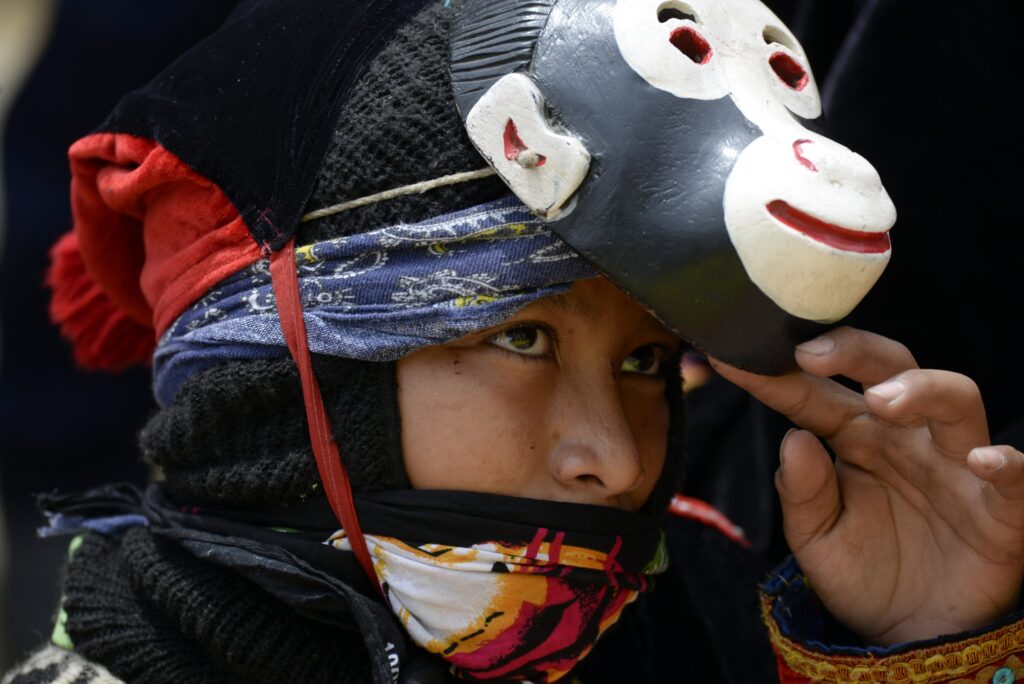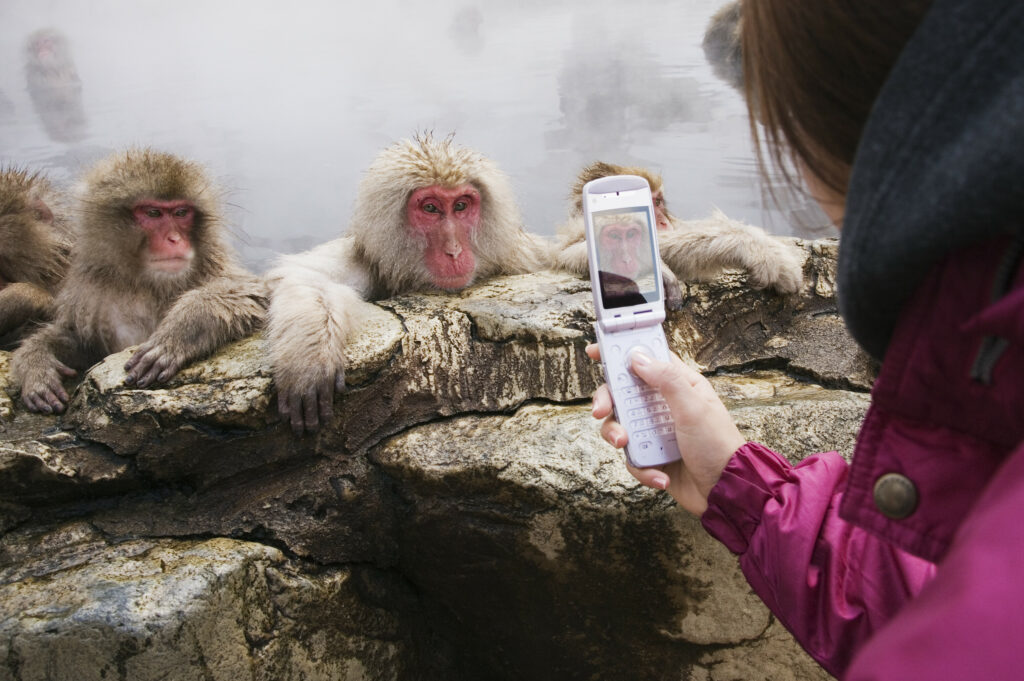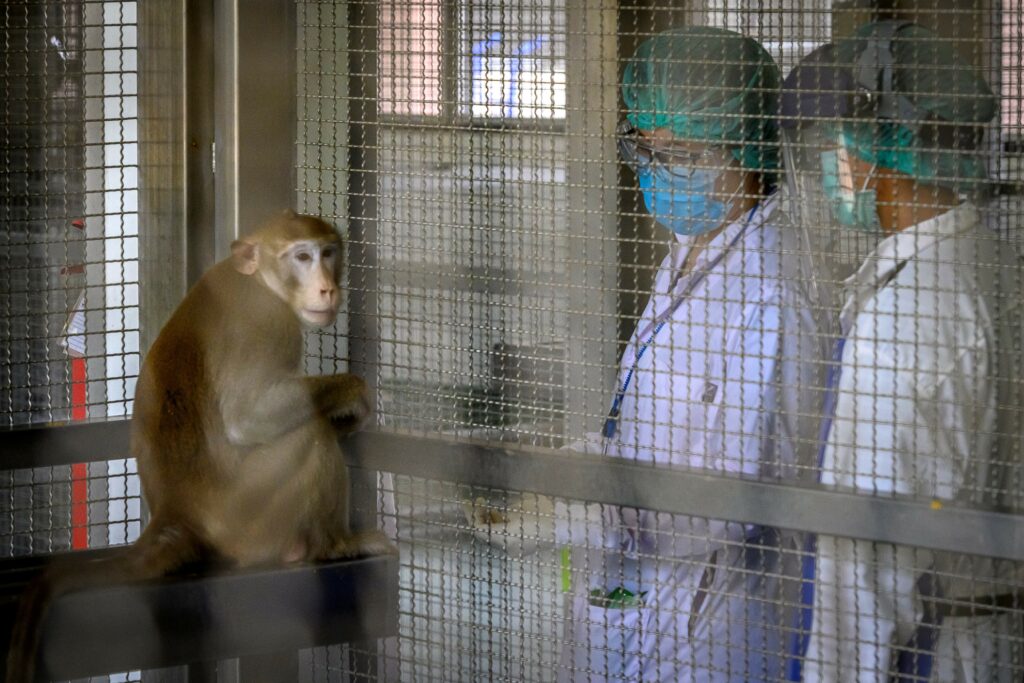Does “Monkeypox” Give Monkeys a Bad Name?
The name of the latest viral disease making global headlines, “monkeypox,” is a misnomer. The virus may have been first detected in monkeys in 1958, but scientists believe that squirrels and other rodents are the virus’ more likely reservoir. Nevertheless, monkeys continue to be associated with the virus, which has now spread to over 50,000 individuals in over 100 countries. In July, the World Health Organization declared the outbreak a Public Health Emergency of International Concern.
Monkeys and humans—taxonomically classified together under the order Primates—have interacted with each other since time immemorial. [1] [1] The Primate order includes humans, great apes (chimpanzees, bonobos, gorillas, and orangutans), lesser apes (gibbons), monkeys, and prosimians (tarsiers, lemurs, lorises, and bushbabies). Of course, the same can be said of other animals. As anthropologist Anna Tsing has remarked, “Human nature is an interspecies relationship.” But as biological anthropologist Agustín Fuentes notes, despite the “very different evolutionary paths” that make Homo sapiens distinct from other primates, our interactions have a “special significance” given our many biological and behavioral overlaps.
From Asia to Africa to the Americas, nonhuman primates have shared the same geographic range as many human civilizations. Today, however, many nonhuman primate species—about 60 percent, according to a 2017 study—are threatened with extinction owing to human-caused threats including habitat loss, hunting, and the illegal wildlife trade.
Humans have historically perceived monkeys and apes in diverse ways. In recent decades, they have come to be associated with (and blamed for) spreading diseases to humans. For instance, a popular and enduring misconception is that HIV originated from humans having sex with monkeys. (The virus did in fact come from monkeys and apes, but scientists have yet to determine how it mutated from a mild simian illness into a fatal human one.) Ebola, too, has been associated with monkeys and apes, even though scientists suggest that insectivorous bats could have been its source.
As the monkeypox outbreak continues, what can explain the negative associations between nonhuman primates and disease? To begin answering this question, let’s revisit some of the long-standing perceptions of monkeys and other nonhuman primates throughout history and across cultures.
Historically, monkeys have often held positive associations in the popular imagination across cultures. In ancient Indian epics such as the Ramayana and the Mahabharata, for instance, the monkey Hanuman is portrayed as a divine companion to the god Rama and also revered in his own right as a Hindu god. In the 16th-century Chinese epic Journey to the West, Sun Wukong, also known as the Monkey King, is a main character depicted as having superpowers. In ancient Maya society, archaeological and linguistic evidence shows that monkeys were likewise held in high esteem.
Monkeys have not always been so highly regarded, however. They have also been viewed ambivalently or negatively, especially in places where people have been living with monkeys for thousands of years. In India, for instance, cultural anthropologist Daniel Solomon writes that rhesus macaques are often depicted by journalists as a “monkey menace.” But, their relationships with humans are complex. Macaques draw people to tourist attractions, which is seen as a positive for the local economy—but they also steal visitors’ “glasses, scarves, shoes, or cellphones” for a “ransom of food.”
In Japan, meanwhile, macaques have sometimes been regarded as spiritual protectors, as epitomized by the famous “Three Wise Monkeys” associated with Buddhism. But macaques have also sometimes been portrayed in folklore as karmic monsters, or previously “bad” humans reborn in monkey form to terrorize humans.
As macaque populations have rebounded in Japan, thanks to conservation efforts after World War II, some in rural communities have come to loathe the monkeys for wreaking havoc in their villages. In an ethnographic account from the 1990s, social anthropologist John Knight noted that some younger villagers had come to a detente with the monkeys and even accepted the eating of their crops as penance for the previous generations having destroyed the monkeys’ habitats. However, this relationship seems to be changing yet again as climate change and other pressures are intensifying human-macaque conflict in Japan and elsewhere.
In Indonesian-controlled West Papua, environmental anthropologist Sophie Chao explores how Indonesian settlers often use derogatory language associating West Papuans with backward and unintelligent monkeys deserving of their “second-class citizen” status. [2] [2] Chao notes that in Indonesia, “monkey” (monyet) is used loosely to describe all primate species. However, Papuans themselves have reappropriated the monkey in their struggles for sovereignty from Indonesian rule.
Chao quotes a Papuan interviewee: “If we are monkeys, then we are not humans. If we are not humans, then stop trying to turn us into Indonesians. Stop trying to civilize us. Stop cutting down our forests. Let us be monkeys. Let us live in the forest, away from humans and cities and the government. Give us our independence.”
In Europe, some historians trace negative attitudes toward monkeys to colonialism, when monkeys were taken from their original habitats to serve as pets, curiosities, and entertainment. Thereafter, they were often portrayed in paintings and other art and media forms as objects of comedy and ridicule.
Further contributing to the poor view of simians were racial and evolutionary ideas from the 17th century onward. In recognizing monkeys and apes as ancestors of Homo sapiens, scientific racism created a hierarchy of species that cast humans—particularly White Europeans—as superior and monkeys and apes as inferior.
Black people were “simianized,” associated with monkeys and their stereotyped monstrous behavior, or presented as the evolutionary link between monkeys and Europeans. Adding further nuance, the cultural studies scholar Megan Glick argues that primates were racialized according to species (and their perceived skin and hair colors). White Euro-Americans identified with and praised the “whitened chimpanzee” while denigrating Black Africans, whom they associated with the “blackened gorilla.”
All the above, particularly the enduring legacies of scientific racism, are shaping people’s harmful reactions to monkeypox. Various commentators, including public health scientists, have called for changing the name of the virus to avoid further stigmatization of particular groups, particularly Black people and members of the LGBTQ+ community. As the columnist Jay Michaelson puts it, the name “associates the virus with ‘animalistic’ behavior. … No one wants to be called a monkey.”
In response to these critiques, WHO has indicated they will indeed rename the virus. They’re now in the process of taking proposals.
What’s less emphasized in these calls, however, is that the name of the virus has also led to violence against monkeys themselves. In Brazil’s Rio Preto region, at least 10 monkeys appear to have been poisoned, possibly due to people’s fears of acquiring the disease. Elsewhere in Brazil, there are reports of monkeys being stoned or shot to death, mirroring the fate of howler monkeys blamed for a 2017 outbreak of yellow fever in the same country. This compelled WHO officials to warn against attacking monkeys, stressing that the virus is in fact spread by humans.
Speaking of viral spread, what happens if we stop to recognize that humans can also often serve as vectors for disease to other species within our more-than-human-world? We have seen this with COVID-19, with humans spreading the coronavirus to other primates—whether unintentionally, to captive gorillas in San Diego, or deliberately, to the countless monkeys that were experimented upon to develop today’s COVID-19 vaccines.
Perhaps, amid viral outbreaks that affect humans and nonhumans alike, we should be thanking monkeys for helping us get through a public health crisis, instead of blaming them for one.



































